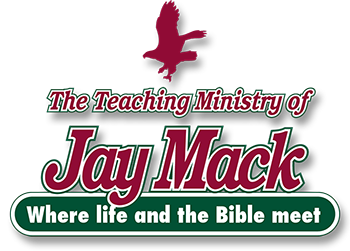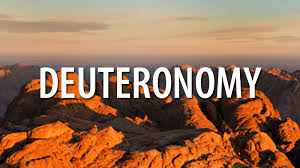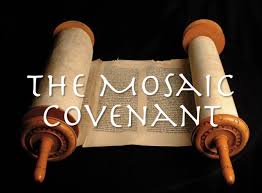Ah – Treaty of the Great King
Treaty of the Great King

Part of the standard procedure followed in the ancient Near East when “the great king” gave his covenant to a vassal people was the preparation of a text of the ceremony as the treaty document and witness.12 The Near Eastern vassal treaty, used in the fifteenth to the thirteenth centuries BC, had the following parts:
1. Preamble (“These are the words . . .”). The preamble in the Hittite suzerainty treaties normally opened by identifying the words contained in the treaty as those of the Hittite king.
2. Historical Prologue (events leading to and forming the basis of the treaty). History plays a particular role in the covenant. The covenant prologue recounts those events that came before the founding of the covenant, which were of fundamental importance.
3. General Stipulations (statement of substance concerning the future of the relationship, and summarizes the purpose of the specific stipulations between the two parties). Here were the principles of the new relationship. It details what the king would do for the vassals, and what the vassals (the people) would do in return.
4. Specific Stipulations, an enlargement of the covenant stipulations.
5. Blessings and Curses relating respectively to the maintenance or breach of the covenant. The kings would threaten their subject about the consequences of disobeying the covenant.
6. Witnesses that the pagans would call various deities to witness the treaty.
The vassal treaty was employed in the Near East when a great power (the suzerain king) imposed certain conditions of vassaldom on a smaller state (the vassal), which would normally have been conquered by the more powerful state in battle. The treaty explained the reasons for imposition and the nature of the conditions imposed on the smaller state, and made certain provisions relating to the maintenance of the treaty. The suzerain king guaranteed the vassal benefits and protection. But in turn, the vassal was obligated to be loyal solely to the suzerain, with the warning that any disloyalty would bring punishments as specified in the covenant. How was the vassal to show loyalty? By keeping the specific stipulations of the covenant. As long as the vassal kept the specific stipulations, the suzerain knew the vassal was loyal. When the specific stipulations were violated, however, the suzerain was required by the covenant to take action to punish the vassal. The same basic type of treaty seems to have been employed throughout the Near East, and there is evidence of its use, in simpler form, in Mesopotamia as early as the third millennium. In Egypt, there is some evidence to suggest that the treaty form was employed not only in relation to external vassal states, but also in relation to foreign (labor) groups within Egypt. Both the suzerain-vassal treaties and the covenant which was established at Mount Sinai follow a similar pattern.
The Israelites adapted the Near Eastern vassal treaty form for their own use in order to express the nature of their relationship to YHVH. For many years they were in effect vassals to Egypt, but that old bondage was brought to an end in the Exodus for Egypt. Being liberated from bondage to an earthly power, they then submitted themselves in the Sinai Covenant to become vassals of God, the one who had liberated them from Egypt. The nature of this new submission, expressed in the covenant, finds its dramatic expression in the form of a treaty. While other smaller states might serve Egypt, or the Hittite Empire as vassals, the Israelites owned their allegiance only to their suzerain God. This treaty, in which their covenant was set, finds striking expression in the book of Deuteronomy as a whole; in broad outline, the treaty of the book may be described as follows:
1. Preamble (1:1-5): Deuteronomy opens in a similar way to the Hittite suzerainty treaties, but in a distinctive manner: These are the words that Moses spoke to all Isra’el (1:1). The formal similarities are clear, but the difference in substance is noteworthy; the book does not open with the words of the LORD, the true King of Isra’el. The human words are those of Moshe. This difference does not mean that Moshe was in effect the king of Isra’el; however, it points to his role as the spokesman or prophet of YHVH. He was the first of a distinguished line of prophets in Isra’el. And, in the last verses of the book, when Moses had died, it was said that there had not been a prophet like him since then; what distinguished Moshe was that he was a man whom ADONAI knew face to face (Deuteronomy 34:10).
There is a further aspect to the prophetic role of Moses in Deuteronomy. In Deuteronomy 18:15-22, there is a description of the nature of prophecy, but the passage is in itself prophetic in foreshadowing another Prophet who was to come. As Moses was the first prophet in the covenant community founded at Sinai, so too Yeshua had a prophetic role in the inauguration of the B’rit Chadashah. During the early ministry of John the Immerser, he was asked if he was the prophet (see the commentary on The Life of Christ, to see link click Bl – John the Baptist Denies Being the Messiah), and he answered negatively. John was only a forerunner. Yeshua was the coming Prophet, but He was more than a prophet. Therefore, in the TaNaKh, the opening words were those of Moses, representing the true King of Isra’el; in the B’rit Chadashah, the Kingdom was inaugurated by the King Himself.13
2. Historical Prologue (1:6 to 4:49): The history in the biblical tradition does not, however, have the same meanings as do modern concepts of history. Biblical history isn’t merely an unbroken record of the causes and effects of different nations, rather, biblical history reflects the will of YHVH. The historical prologue provides the basis upon which the covenant between Ha’Shem and His people is remembered. But it embraces both the past and the future. Because [God] is the same yesterday and today and forever (Hebrews 13:8), when we look at how ADONAI treated Isra’el (and us) in the past, we can be confident of how the LORD will treat Isra’el (and us) in the future. In other words, the past pictures the faithfulness of God within the relationship and holds the promise for the continuation of that relationship. Conversely, the past may remind the people of their lack of faithfulness, or the unfaithfulness of their ancestors, and it may therefore impress upon them more urgently the need to live godly lives to receive the blessings of the covenant relationship.14
3. General Stipulations (Chapters 5 to 11): The entire generation that left Egypt in the Exodus was now dead and the covenant needed to be renewed for a new generation. The renewing of the covenant thus consisted of a new commitment of love to ADONAI. The nation of Isra’el was not based on any human ruler, or no democratically elected government, but on the living God. In Deuteronomy the basic principle underlying the relationship between YHVH and His people is stated and then worked out in some detail in the address of Moshe. It was in love that the covenant was initiated by YHVH in the first place and it was by love that the people were to maintain their close relationship to the LORD. The stipulation is first stated in the Ten Commandments (5:6-21), and secondly that His people must love Him with their whole being (6:5). In the remaining portions of the general stipulations, love is a recurring theme, both God’s love for mankind and the love mankind must have for God.
The imagery used to picture the principle of love is that of a father’s love for his son, which has two characteristics. This fatherly love may be expressed in YHVH’s compassionate care for His people as in 1:31, or it may be expressed in His disciplining them as in 8:5. Both of these are aspects of fatherly love. The command to love, however, does not reduce the covenant to a legalistic relationship. Love must be a response toward the LORD from the heart, the love of God and the love for God.
Love, the basic principle of the covenant, finds its expression in the Ten Commandments, which is the constitution of the state of Isra’el whose king is YHVH. In other words, love was not simply a principle or abstract concept; it was given clear expression in the commandments, which showed the way in which man’s love for ADONAI and for his fellow man must be given expression. The Ten Commandments, then, were vital to the continued welfare and existence of the Israelites. Therefore, to break the Ten Commandments was to disrupt the relationship of love. And if there was no love, there could be no covenant.15
4. Specific Stipulations (Chapters 12 to 26): The details contained in the specific stipulations are in many ways the most distant and foreign elements of Deuteronomy to the modern reader. The matters touched on in the exposition of the commandments are numerous and varied; some appear to be of the greatest importance, while others seem to be relatively insignificant. There appears to be a mixture of ceremonial, religious, civil and criminal law. No area of human living is immune with respect to the covenant.
In the modern world, a distinction may often be made between the religious and the secular, or the sacred and the sinful. To Isra’el, such a distinction would be merely artificial, not because there was no distinction in the spheres of life within which the commandments operated, but because all of life was under the dominion of YHVH, the Master of the covenant. Consequently, the broad scope of the specific stipulations is significant. They do not cover every possible thing that could arise in human living; however, they indicate by their diversity that no area of life is irrelevant or unimportant to the members of the covenant community. Individual responsibility was vital, not only for his or her own well-being, but also because each individual’s actions were part of the whole community. The whole was endangered by the sins of its members. If a crime was committed and the criminal were not brought to justice, the whole community was responsible to deal with the wickedness that had been done and to seek the forgiveness of the LORD. Therefore, you will purge the guilt of innocent blood from your midst, when you do what is right in ADONAI’s sight (21:9).
The significance of the specific stipulations (see Cr – The Second Address: The Stipulations of the Covenant) emerges in the relationship between Ha’Shem and His people. The people declared that ADONAI was their God (26:18), and God promised that He would set His people above all nations, and that they would be a holy people, set apart for His purposes (26:19). The people’s declaration was not simply a statement of fact, but a submission to the obedience to the 613 commandments of ADONAI. It was in this section that Moshe warns against false teachers and false doctrines. He cautioned them against idolatry. Obedience was necessary, for their declaration would be null and void if their lives did not reflect the reality of the declaration. To declare that ADONAI was their God and then not walk-the-talk would be more than hypocrisy in the eyes of the world. It would drag the name of YHVH through the mud. Therefore, the object of the specific stipulations is the maintenance of a true and living relationship with the LORD of the covenant.16
5. Blessings and Curses (Chapters 27-28): These chapters provide a somber tone to the book of Deuteronomy. The emphasis is placed on the curses rather than on the blessings, which function as a solemn warning to those who renewed their allegiance to the God of the covenant. It was no light matter to enter into a relationship with Ha’Shem. The perspective within which the blessings and curses are set is that of the whole community as a whole; obedience to the God of the covenant would result in blessing, long life, and the possession of the Promised Land, while disobedience would lead to disaster. As a result, when Isra’el renewed its covenant with the LORD, the bright prospect of a future with ADONAI was contrasted with the bleak despair of a future without Him. By emphasizing the curses, Moses brought home to his people the awesome responsibility of the commitment they were making.
The darkness of the picture given by the emphasis on the curses in Deuteronomy is clarified by the words Paul wrote to the Galatians. He quotes Deuteronomy 27:26, everyone who does not live out all 613 commandments of the five books of Moshe comes under a curse. The paradigm of ancient Isra’el finds herself in the emphatic expression, for all who rely on the deeds of the Torah are under a curse – for the Scriptures say, “Cursed is everyone who does not keep doing everything written in the scroll of the Torah” (Galatians 3:10).
Where, then, is hope to be found? How can mankind be redeemed from the curse of the Torah? Paul provides that answer by quoting Deuteronomy once again and applying the passage to Yeshua. Messiah liberated us from Torah’s curse, having become a curse for us, for it is written, “Cursed is everyone who hangs on a tree” (Galatians 3:13). Through the death and resurrection of Yeshua Messiah, the blessing of ADONAI may be set before mankind again.17 The Jewish people are still living out these blessings and curses, and that will not stop until the Great Tribulation and the Second Coming of Yeshua Messiah.
6. Witnesses (see 30:19 and 31:28): provisions for the continuity of the covenant and a successor for Moses. The calling of witnesses was a regular feature of the suzerain-vassal treaty. The gods of the two parties to the treaty were normally invoked as witnesses. In Deuteronomy, it is YHVH Himself who speaks, and because there are no other gods to call upon as witnesses, the LORD called upon heaven and earth to witness (4:26). In the presence of witnesses the choice before Isra’el is declared, life or death, blessing or cursing. The final decision was Isra’el’s to make. It was a free choice of a free people. Moshe made sure that the words of this scroll were written down so that future generations would not lose sight of it, and would continue to have access to it. He commanded Joshua, and those leaders who would come after him, to put the scroll into the Ark of the Covenant. Moses knew that their apostasy would certainly come and their exile into the diaspora would be a reality for them. So, he did not want the Word of God to slip away from the Jewish people. But the inevitable falling away was inevitable, but especially the time Messiah made His appearance on earth. So far away were they from the Word of God that they didn’t recognize the Word made flesh.
In addition to the heavens and the earth, and scroll of the Torah (31:26), YHVH gave the Song of Moshe (31:1-43) as a witness to all the children of Isra’el. All the witnesses were given to remind Ha’Shem and Isra’el of their mutual commitments. This song recites the LORD’s many gracious acts on their behalf, as well as His demand for absolute loyalty. Any long-term departure from genuine obedience would invite the wrath of covenantal cursing.18
While the structure of this covenant was similar to the suzerain-vassal treaties of the ancient Near East, it was much longer and much more personal since it comes from a loving God. And as opposed to the other books of the Torah, here we see a Moshe that is very active and fervent. It is in this book we see him as the good shepherd. A man who is so concerned with his flock that he gives a series of emotional and compassionate farewell messages. This is contrasted with the book of Leviticus, where Moses took the back seat and merely reported the words of God. But here in Deuteronomy, he acts as a rabbi.
The book of Deuteronomy, the fifth book of Moshe, is therefore a literary account of the renewal of the covenant which ADONAI gave to Isra’el on the plains of Mo’ab.








